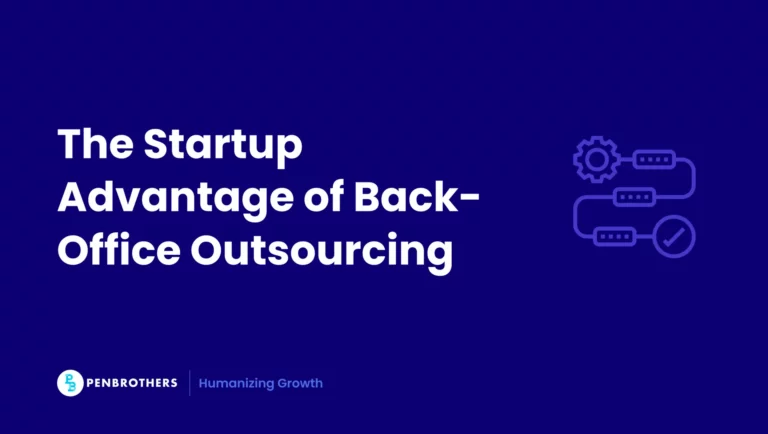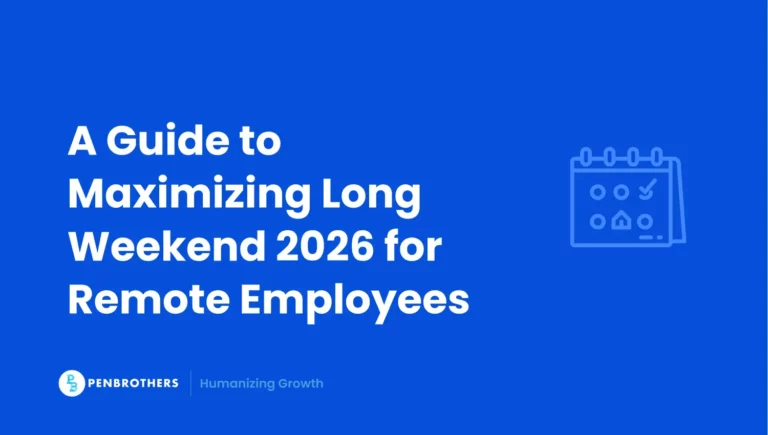The boardroom is quiet except for the click of a slide remote. Your CIO has India delivery humming across apps, QA, and support. Your CFO asks the only question that matters right now: Can we protect cost and continuity if U.S. policy shifts?
If you’re outsourcing to India, this page gives you a clear answer. I’ll separate rumor from policy, then hand you contract language, pricing levers, and diversification moves you can put to work this quarter.
Key Takeaways
- India Remains the Dominant Global Hub for Scale: India continues to be the world’s foremost outsourcing destination, not only due to its 60-70% cost savings but primarily for its unmatched scale in human capital, possessing the world’s second-largest pool of software engineers (over 5.4 million) and a mature ecosystem for industrialized IT and BPO operations.
- The HIRE Act Threatens the Cost-Arbitrage Model: The proposed HIRE Act in the U.S. Senate is a major policy risk. Although not law, the bill’s proposal to impose a 25% excise tax on outsourcing payments would fundamentally alter the cost calculation and force U.S. buyers to accelerate moves toward strategic diversification.
- Policy and Geopolitical Risks Necessitate Diversification: A key risk for companies heavily invested in India is geographic concentration combined with rising policy volatility (signaled by the HIRE Act and new tariffs on Indian goods). The smart strategic response is to design resilience through a multi-hub model, blending locations like India (for scale) with the Philippines (for customer experience) and Mexico (for nearshoring).
- The Strategic Focus is on Value, Not Just Price: In 2025, successful outsourcing to India is less about short-term cost reduction and more about strategic value. The goal is to maximize ROI by leveraging India’s scale to accelerate development and innovation, while using proven frameworks to mitigate operational risks like high attrition and slow ramp-up times.
Outsourcing to India: Why U.S. Buyers Still Choose It
What Outsourcing to India Solves Today
India remains the deepest global pool for engineering, BPO, and shared services at scale. Here’s why buyers still choose it:
Cost bands that unlock program-level ROI. Mature delivery in software engineering, data, finance ops, and customer experience means you’re not paying pioneer rates. You’re getting proven execution.
Breadth of roles and seniority to scale teams fast. Need a junior dev? They have thousands. Senior architect? Also covered. The talent pipeline flows at every level.
Process maturity that works. Decades of global delivery and vendor ecosystems mean these aren’t experiments. They’re operating systems.
Where India Fits vs Nearshore and Onshore Models
The smart play isn’t choosing India over everything else. It’s knowing when to use what.
Use India alone when 24×7 coverage, scale, and cost drive your decisions, and your workflows can handle limited time-zone overlap.
Blend models when you need more than just scale. Policy volatility and operational risks (like high attrition) are driving leaders to seek partners who can deliver integrated, high-retention teams. A proven model is: India for large-scale, cost-driven projects, plus the Philippines for high-skill roles like software engineering, data analytics, and finance ops, where cultural alignment and team stability are critical for long-term success.
The Policy Picture: What is Official vs Proposed vs Rumored
Let’s cut through the noise.
| Item | Jurisdiction | Status (as of Oct 15, 2025) | What it would change | What to monitor |
| HIRE Act (Halting International Relocation of Employment Act) | U.S. federal | Remains a proposed bill, not law. No significant movement in the current session. | Would impose a 25% excise tax on certain outsourcing service payments and disallow the corporate deduction for those costs. The proposal has not advanced out of committee. | Committee referrals, CBO score, any new co-sponsors, inclusion in broader tax legislation. |
| Federal service tariffs on India IT services | U.S. federal | No service-specific tariffs are in place. This remains a rumor. | A broad tariff on imported services would raise landed cost and could disrupt vendor economics. | USTR announcements, Federal Register notices, congressional proposals. |
| U.S. tariffs on Indian goods | U.S. federal | The U.S. imposed an initial 25% tariff, followed by an additional 25% duty, resulting in a total 50% tariff on a range of imported goods. This policy shift, linked to broader geopolitical tensions, fundamentally alters the trade relationship and necessitates greater focus on supply chain resilience. | While not directly targeting IT or BPO services, these tariffs mark a significant shift in U.S.-India trade policy and create new volatility. They must be monitored as a leading indicator of potential changes in service-related trade policy. | Official announcements from the U.S. Trade Representative (USTR), retaliatory actions from India, and statements from the Department of Commerce. |
The HIRE Act Proposals in Plain English
Here’s what this actually means for you:
Core idea: tax or disallow certain payments to offshore providers for services that replace U.S. jobs.
Mechanics under discussion: a 25% excise tax on covered outsourcing payments and disallowance of deductions for those expenses. Effective date would follow enactment, with details defined by Treasury and IRS.
Who would be affected: U.S. buyers paying non‑U.S. vendors, and potentially captives with cross‑border intercompany charges, depending on final definitions.
Timeline unknowns: committee path, amendments, House companion, and whether the final package lands in a budget bill or a standalone.
What is Not Law Today
Let’s be clear about what’s real and what’s speculation:
There is no federal ban on outsourcing to India.
There is no enacted U.S. tariff that broadly applies to imported technology or BPO services.
If anything changes, it will show up in bill trackers, the Federal Register, and IRS guidance, not just social media chatter.
Primary trackers:
- Congress bill search
- Senate Finance Committee schedule
- Federal Register
- IRS Newsroom
- MeitY DPDPA page
Related reading:
- The U.S. Government Shutdown Is a Wake-Up Call for Offshore Resilience
- The H-1B Visa $100K Fee: Policy Details and Industry Reactions
- Trump on IT outsourcing, what actually matters for buyers
- Fed Rate Cuts and Outsourcing in 2025: Executive Guide
- Outsourcing Tax: What Is Official, What Is Proposed, What Is Noise
What This Means for the Broader Outsourcing Industry
Let’s be honest about something: if the HIRE Act passes, it won’t just hit India.
The proposed legislation targets payments to “foreign entities” for services that could theoretically be performed by U.S. workers. That’s broad language. It covers the Philippines, Poland, Mexico, Vietnam—anywhere you’re moving work offshore.
The ripple effects would reshape the entire industry:
Immediate cost pressure. A 25% tax plus lost deductibility would change the math for every offshore destination, not just India.
Strategic rebalancing. The new U.S. tariffs on Indian goods, while not service-related, have already prompted a strategic review of global supply chains. A 2025 supply chain survey by the National Foreign Trade Council confirms that layered tariffs and geopolitical friction are forcing U.S. firms to prioritize resilience, with over 90% implementing or planning supplier diversification.
A flight to quality. Smaller offshore providers focused purely on cost arbitrage are most exposed to policy shocks. We expect to see a market consolidation as clients move toward strategic partners who can deliver value beyond labor savings. Proven execution frameworks, cultural integration, and specialized talent in high-demand areas like AI and cybersecurity become critical differentiators. Companies that chose partners for capability and reliability will adapt; those who chose solely on price will be forced to reassess.
From our perspective, this is why we’ve always emphasized value beyond cost arbitrage. Our Hypercare Framework, a 180-day structured onboarding process, is designed to build high-retention teams that solve for the high attrition and slow ramp-up that erode the ROI of a purely cost-focused model.
The smart play right now? Don’t wait for policy clarity to diversify your approach. Whether you’re using India, the Philippines, or anywhere else offshore, build resilience into your model. That means hybrid delivery, strong vendor relationships that justify their cost premium, and contracts that can absorb policy shocks.
We’re watching this closely and helping clients prepare for multiple scenarios. Because the only certainty is that global sourcing strategies need to be more sophisticated than they were five years ago.
Outsourcing to India Cost Exposure: How to Model It
Base Case vs Policy‑Shock Case
Use a simple sensitivity grid to see the impact on your landed cost per FTE if an excise tax or disallowance were enacted. Numbers below are illustrative.
| Input | Base case | Policy‑shock case |
| Vendor blended rate (India) | $2,650 / FTE‑month | $2,650 / FTE‑month |
| FX assumption (USD/INR) | 82.0 | 82.0 |
| Excise tax on covered payments | 0% | 25% |
| Disallowance impact (effective tax rate 21%) | n/a | 21% on disallowed amount |
| Landed cost per FTE‑month | $2,650 | $2,650 × 1.25 + tax effect |
Tip: Model both gross‑up and no gross‑up scenarios in your SOW. If a change‑in‑law clause allows a fee adjustment, simulate collars at ±10% and a renegotiation window of 30 days.
Hidden Costs and How to Contain Them
The thing is, even without policy changes, there are costs most buyers miss in their initial calculations.
Manage what you can control now:
Ramp time: time‑box onboarding and require shadow‑run plans.
Management overhead: define span of control and vendor‑to‑client ratios in the SOW.
Attrition buffers: set quarterly floor/ceiling bands and backfill SLAs.
QA debt: target defect escape‑rate and automation coverage thresholds.
Security controls: insist on SOC 2 Type II or ISO 27001, with clear breach notice SLAs.
2×2 cost‑impact matrix:
- High impact, high control: scope clarity, automation pipeline, QA thresholds.
- High impact, lower control: policy changes, FX spikes. Use collars and reopeners.
- Lower impact, high control: meeting cadence, knowledge base standards.
- Lower impact, lower control: industry wage drift. Use indexation bands.
Contracts That Protect You If Policy Shifts
Change‑in‑Law Clause
Spell out the trigger, the renegotiation window (30 days works), termination rights for affected SOWs, and a documented fee‑adjustment mechanism.
Tax and Tariff Gross‑up Language
Be explicit about who absorbs what. Provide pricing both tax‑exclusive and tax‑inclusive. Add caps and collars so neither side absorbs unlimited volatility.
Subcontracting and Location‑of‑Work Controls
Require advance notice and approval for any new subcontractor or delivery location. Preserve options for restricted territories and data‑residency configurations if your risk profile demands it.
Exit, Transition, and Escrow Paths
Pre‑negotiate the step‑down plan, knowledge transfer, and artifact handover. Use software and infrastructure‑as‑code escrow so you can step in if service is disrupted by law, insolvency, or breach.
Security and Privacy Schedule
Attach your security baseline: SOC 2 Type II or ISO/IEC 27001, plus breach notice SLAs and mappings to DPDPA and, where applicable, GDPR or U.S. sector rules.
Compliance When Outsourcing to India: How U.S. Firms Stay Safe
DPDPA in Practice for U.S. Buyers
Here’s what actually matters for your operations:
Consent and purpose: process personal data of Indian residents only with valid consent or legitimate use, and keep processing tied to a specified purpose.
Cross‑border transfers: allowed unless India notifies a restricted country list. Watch MeitY notifications.
Breach notice: vendors must notify the Data Protection Board of India and affected individuals, in the manner prescribed.
Vendor obligations: publish a contact point, enable grievance redressal, and erase data when the purpose ends, subject to legal retention.
Sector Add‑ons to Mirror
Even if you’re not a bank, use RBI‑grade outsourcing controls as a benchmark: concentration‑risk checks, audit rights, clear BCP/DR, third‑party register, and location reporting.
Data Flows and Tooling
Minimize data and mask PII where possible.
Use secure, logged environments for offshore access.
Keep evidence for audits: access logs, change history, and DPA mappings.
Is Outsourcing to India Still a Good Idea in 2025?
Yes. U.S. companies are not only continuing to outsource to India; they are expanding the practice at a significant rate. The conversation has shifted from if a company should outsource to how they can do it strategically to drive growth, not just cut costs.
Here is why it remains a sound business decision:
The Talent Pool is Deeper and More Specialized Than Ever
The core value proposition of India remains its unmatched scale. As of 2024, India’s technology industry employs over 5.4 million people and possesses the world’s second-largest pool of software engineers, according to NASSCOM.
The core value proposition of India remains its unmatched scale. With an IT professional base of over 5.4 million (as of 2024), India possesses the world’s second-largest pool of software engineers. This workforce drives a dominant ecosystem of over 1,760 Global Capability Centers (GCCs), reinforcing its status as the world’s foremost hub for high-volume, industrialized IT and BPO operations. While cost remains a factor, the primary driver for outsourcing in 2025 is access to skills that are scarce and expensive in the U.S. market.
- India has built a formidable talent base in critical emerging technologies. NASSCOM reports its talent pool in AI and data science is approximately 420,000, though the primary challenge is shifting from raw graduates to job-ready, skilled specialists.
- Proven Process Maturity: Decades of experience mean Indian teams operate with established, reliable processes. It’s a mature operating system for global delivery. As of 2025, there are over 1,590 Global Capability Centers (GCCs) in India. According to a joint report from ANSR and UnearthInsight, 174 companies from the Fortune Global 500 (35%) operate their own GCCs in the country, using them as strategic hubs for innovation.
The Economics Still Deliver Clear ROI
While the cost savings are not as extreme as they were a decade ago, the economic advantages remain compelling, especially when viewed through the lens of total return on investment.
- Sustainable Cost Advantage: Fully loaded costs for a senior software engineer in India remain, on average, 60-70% lower than in the United States. This allows companies to build larger, more dedicated teams for the same budget, accelerating development and innovation.
- Focus on Core Business: Outsourcing non-core functions frees up domestic teams and capital to focus on high-value activities like product strategy, market expansion, and customer relationships. The goal is not just to save money, but to reallocate resources for maximum impact.
The question is no longer “Why outsource to India?” but “Who is the right partner to make it work?” The most successful outsourcing relationships are built on strategic value, proven frameworks for integration, and a clear focus on long-term performance, not just short-term cost reduction.
What are the Risks of Outsourcing to India?
While India remains a powerful hub for scale, a prudent strategy must account for three distinct risks:
1. Policy and Tax Risk
The introduction of the HIRE Act (S. 2976) in the U.S. Senate and the August 2025 tariffs on Indian goods signal a new era of policy volatility. These proposals, even if not fully enacted, create significant uncertainty and threaten the cost-arbitrage model. A 25% excise tax or new tariffs can erase projected savings overnight.
2. Geographic Concentration Risk
Relying on a single country for critical functions, whether IT, finance, or R&D, creates a single point of failure. Geopolitical tensions, regulatory changes (like India’s DPDPA), or even infrastructure challenges in key delivery cities can disrupt your entire global operation.
3. Operational Risk (The Hidden Costs)
The most common risk isn’t policy, but poor execution. Operational inefficiencies, high attrition rates, and slow ramp-up times are the top pain points for clients. Without a proven framework for onboarding, integration, and retention, companies “save” on salaries but lose ROI to high turnover and low productivity.
Delivery Resilience: Design It Before You Need It
Diversify by Location
India primary for engineering and shared services.
Philippines for customer experience, back‑office voice, and strong English comms.
Poland or Mexico for EU or U.S. overlap and specialized skills.
Diversify by Model
Pair your vendor with a small captive GCC for anchor roles.
Dual‑vendor setup with 15–30% swing capacity.
Time‑boxed pilots for new sites or partners before full rollouts.
Outsourcing to India is still a high‑return play, and you can protect it with the right controls. Track policy where it’s actually made, model cost bands with buffers, harden your contracts, and design resilience before you need it.
When you’re ready to execute, we can help you land the right mix of roles, locations, and guardrails. Book a consultation or grab our Salary Guide to benchmark your plan.
Frequently Asked Questions
U.S. companies continue to choose India primarily for its unmatched scale and maturity. India offers a deep pool of over 5.4 million tech professionals, proven process reliability (a mature operating system for global delivery), and significant cost savings (60-70% lower fully loaded costs for engineers).
The HIRE Act (Halting International Relocation of Employment Act) is a proposed bill introduced in the U.S. Senate; it is not law. It would impose a 25% excise tax on outsourcing payments and remove their tax deductibility. It is currently stalled in committee, but still active.
No. The proposed legislation is not country-specific. Its broad language targets payments to any “foreign entities” for services that benefit U.S. consumers, meaning it would impact outsourcing payments to all global hubs, including the Philippines, Eastern Europe, and Latin America.
The three biggest risks are: 1) Policy and Tax Risk from the proposed HIRE Act, 2) Geographic Concentration Risk (relying on a single country), and 3) Operational Risk due to historically high employee attrition rates (13-17%) and non-transparent hidden costs.
The most critical action is to harden all vendor contracts by immediately adding a “Change-in-Law” clause. This clause should explicitly spell out who absorbs new taxes and should define the terms for renegotiation or termination if U.S. policy changes significantly.






